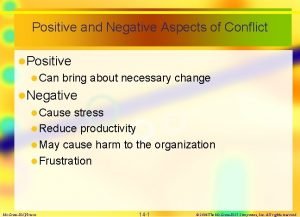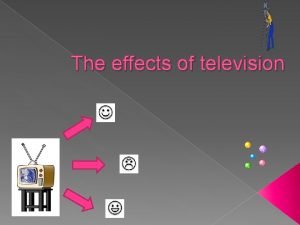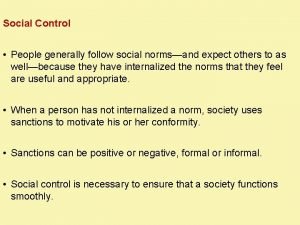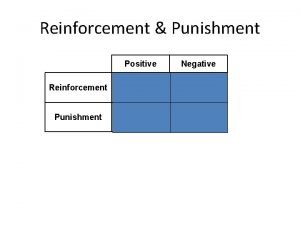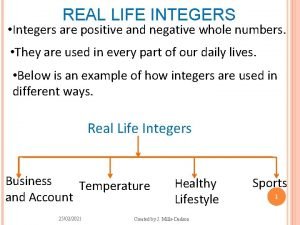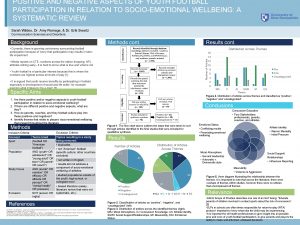Positive and Negative Aspects of Conflict l Positive



















- Slides: 19

Positive and Negative Aspects of Conflict l Positive l Can bring about necessary change l Negative l Cause stress l Reduce productivity l May cause harm to the organization l Frustration Mc. Graw-Hill/Irwin 14 -1 © 2006 The Mc. Graw-Hill Companies, Inc. All rights reserved.

Types of Conflict Mc. Graw-Hill/Irwin 14 -2 © 2006 The Mc. Graw-Hill Companies, Inc. All rights reserved.

Strategies for Managing Interpersonal Conflict l. Compromise l. Avoidance and smoothing l. Forcing a solution l. Confrontation or problem solving Mc. Graw-Hill/Irwin 14 -3 © 2006 The Mc. Graw-Hill Companies, Inc. All rights reserved.

Initiating Conflict Resolution Mc. Graw-Hill/Irwin 14 -4 © 2006 The Mc. Graw-Hill Companies, Inc. All rights reserved.

Responding to a Conflict l Understand the problem l Listen to the complaint l Interpret the problem in terms of actions and effects l Agree with something the other person said l Work on a solution l Find a solution together l Agree on how to carry out the solution l Implement the solution Mc. Graw-Hill/Irwin 14 -5 © 2006 The Mc. Graw-Hill Companies, Inc. All rights reserved.

Mediating Conflict Resolution 1. 2. 3. 4. 5. 6. 7. Begin by establishing a constructive environment. Ask each person to explain what the problem is. When the problem is understood, have individuals state what they want to accomplish or what will satisfy them. Restate in your own words each person’s position. Have all participants suggest as many solutions as they can. Encourage the employees to select a solution that benefits all of them. Summarize what has been discussed and agreed on. Mc. Graw-Hill/Irwin 14 -6 © 2006 The Mc. Graw-Hill Companies, Inc. All rights reserved.

Change in the Workplace l Conflict is both a cause and a consequence of change. l Organizations have been forced to consider the adoption of policies and values that are more familyfriendly. l A large percentage of companies is currently undergoing at least one major business change, such as adopting innovative information technology or reengineering business processes. l An organization’s success depends on how well it adapts to change in its environment. Mc. Graw-Hill/Irwin 14 -7 © 2006 The Mc. Graw-Hill Companies, Inc. All rights reserved.

Change in the Workplace (continued) l Supervisors do not decide whether organizations should change, but how to make the changes work. l Factors that can affect the success of change: l The change agent l Determination of what to change l The kind of change to be made l Individuals affected l Evaluation of change Mc. Graw-Hill/Irwin 14 -8 © 2006 The Mc. Graw-Hill Companies, Inc. All rights reserved.

Sources of Change l Change can originate with management, employees, or external forces. l Organizations change when management sees an opportunity or a need to do things better. l Organizations change when employees form unions or make suggestions on how to improve quality and cut costs. l New laws and regulations often lead to organizational change. l Economic trends can lead to organizational change. Mc. Graw-Hill/Irwin 14 -9 © 2006 The Mc. Graw-Hill Companies, Inc. All rights reserved.

Resistance to Change l Any change requires work. l People are fearful because change carries the risk of making them worse off. l Peoples’ resistance to change is greatest when they are not sure what to expect or why the change is necessary. l Sometimes change meets resistance even when it is positive. Mc. Graw-Hill/Irwin 14 -10 © 2006 The Mc. Graw-Hill Companies, Inc. All rights reserved.

Implementing Change l To implement a change, a supervisor must: l Overcome resistance to it l Ensure that the change is made l Create the conditions in which the change is likely to last l Three phases of change: l Unfreezing l Changing l Refreezing Mc. Graw-Hill/Irwin 14 -11 © 2006 The Mc. Graw-Hill Companies, Inc. All rights reserved.

Unfreezing Tell employees about a change as soon as you learn about it. l Make sure employees understand what the change is and how it is likely to affect them. l Be positive about the change. l Describe how the organization will help employees cope. l Allow employees to express concerns and ask questions. l Answer as many questions as you can and get answers to the rest ASAP. l Keep alert to your company’s status in the marketplace and let your employees know about it. l Listen to expressions of employee sadness or anger without argument. l Mc. Graw-Hill/Irwin 14 -12 © 2006 The Mc. Graw-Hill Companies, Inc. All rights reserved.

Changing l The key to implementing change is building on successes. l As employees see the change achieving desirable results, they are more likely to go along with it and even embrace it. l To induce changes in behavior, the change effort should include tangible or intangible rewards for the desired behavior. l Establish reasonable deadlines for the change. l Identify individuals and groups that will begin with a positive attitude. Mc. Graw-Hill/Irwin 14 -13 © 2006 The Mc. Graw-Hill Companies, Inc. All rights reserved.

Refreezing l The change process is complete only when employees make the new behavior part of their routine. l Backsliding is a natural response; therefore supervisors need to keep everyone on track. l An important part of refreezing is for employees to be rewarded for behavior that shows they have made the desired change. Mc. Graw-Hill/Irwin 14 -14 © 2006 The Mc. Graw-Hill Companies, Inc. All rights reserved.

Proposing Change l To propose a change effectively, the supervisor should begin by analyzing it. l Except for simple changes, a supervisor should make proposals in writing. l Begin with a brief summary of what the change is and why it is desirable. l Provide details about the procedure for change and the costs and benefits involved. Mc. Graw-Hill/Irwin 14 -15 © 2006 The Mc. Graw-Hill Companies, Inc. All rights reserved.

Organization Politics and Power l Sources of power l Position in the company l Personal characteristics l Types of power l Legitimate l Referent l Expert Organizational politics Intentional acts of influence to enhance or protect the self-interests of individuals or groups. l Coercive l Reward l Connection l Information Mc. Graw-Hill/Irwin 14 -16 © 2006 The Mc. Graw-Hill Companies, Inc. All rights reserved.

Political Strategies l Doing favors l Making good impressions l Cultivating the grapevine l Supporting the manager l Avoiding negativism l Giving praise Mc. Graw-Hill/Irwin 14 -17 © 2006 The Mc. Graw-Hill Companies, Inc. All rights reserved.

Building a Power Base Mc. Graw-Hill/Irwin 14 -18 © 2006 The Mc. Graw-Hill Companies, Inc. All rights reserved.

Establishing a Competitive Edge and Socializing l The most successful way to look exceptional and establish a competitive edge is to produce exceptional results. l At many organizations, socializing is one way of getting ahead. l Avoid behaviors such as getting drunk at parties or dating subordinates. l Be sensible, but natural. Mc. Graw-Hill/Irwin 14 -19 © 2006 The Mc. Graw-Hill Companies, Inc. All rights reserved.
 Elements of conflict
Elements of conflict One of the positive aspects of shopping is that it is fun.
One of the positive aspects of shopping is that it is fun. Are terminating decimals rational numbers
Are terminating decimals rational numbers Compare
Compare Internal and external conflict
Internal and external conflict What is conflict and conflict resolution?
What is conflict and conflict resolution? External conflict
External conflict Positive impacts of materials technology
Positive impacts of materials technology Positive impacts of material technology
Positive impacts of material technology She do her homework on the service bus
She do her homework on the service bus Ovulation negative feedback
Ovulation negative feedback Positive effects of cotton gin
Positive effects of cotton gin Positive and negative effects of television
Positive and negative effects of television Negative impacts of materials technology
Negative impacts of materials technology Positive vs negative rights
Positive vs negative rights Positive and negative social control
Positive and negative social control Gelatinq
Gelatinq Negative school culture
Negative school culture When olivia makes rude noises
When olivia makes rude noises Use of integers in real life
Use of integers in real life
